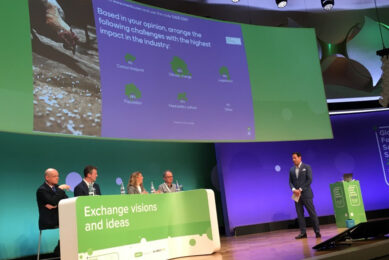New insights on Salmonella
We, from producer to consumer, are all concerned about Salmonella and the safety of pork. I have been reading an interesting paper by two researchers on how errors of omission on pig farms can lead to Salmonella in pigmeat. They make some interesting points.
We, from producer to consumer, are all concerned about salmonella and the safety of pork. I have been reading an interesting paper by two researchers on how errors of omission on pig farms can lead to Salmonella in pigmeat. They make some interesting points, reinforcing some we are now well aware of – like better biosecurity, transmission from vermin, cats, dogs, foxes, birds, flies, and of course, higher herd health.
Thorough cleandown
Where biosecurity is concerned, they re-emphasise the importance of a thorough preparatory cleandown before disinfection with an approved farm detergent. I’ve been saying this for ages and notice on my farm visits how commonly this is ignored or done insufficiently well.
This needs to be a heavy-duty, degreasing type. Moreover, the manager must allow the pig technician time to achieve adequate coverage and soak-in time before going on to use a disinfectant which is approved for a 100% kill of the most common food poisoning strain – S. typhimurium.
Weak
Apparently some commonly-used disinfectants are weak against this organism, something I didn’t know.
One other thing we must improve is transmission from one section of the farm to another and hand-washing when moving, say from the growing areas to the farrowing and nurseries (and back again) may be advisable. The Japanese have been doing this for some time, and they are really fussy about ‘clean meat’.
Again our control of any vehicles delivering or collecting from the ‘production area’ of the farm must be reviewed and entry must be organised so that any vehicle and its driver is kept outside the perimeter.
Impossible
Disinfected or not, as it is almost impossible satisfactorily to sanitise a vehicle doing multi-deliveries. They re-emphasise stocking density (a 30 year-old bee in my bonnet!) and showed that overcrowded pigs result in more salmonellae, probably due to faecal contact and raised stress.
Now here’s a surprise – to me anyway. Feed is considered a low-risk vector. Throughout my working life among pigs there have been three canards – ‘blame the government’, ‘blame the vet’, and ‘blame the food’!
Salmonella reducer
They claim that feed can actually be a Salmonella reducer. Especially if it is ground towards the coarser end and contains acidifiers, or is correctly fermented when fed liquid, and/ or involves whey.
They think that acidifiers enhance the killing of Salmonellae in the stomach, but it is not absolute; being preventive and not curative. They advise that once started, in order to control Salmonellae in the meat they should be continued to slaughter, even if the manufacturers say that they do the most good early on in the pigs growing life.
This will please the firms concerned who, I guess, stand to sell up to four times as much. Hmmn, we’ll see!











